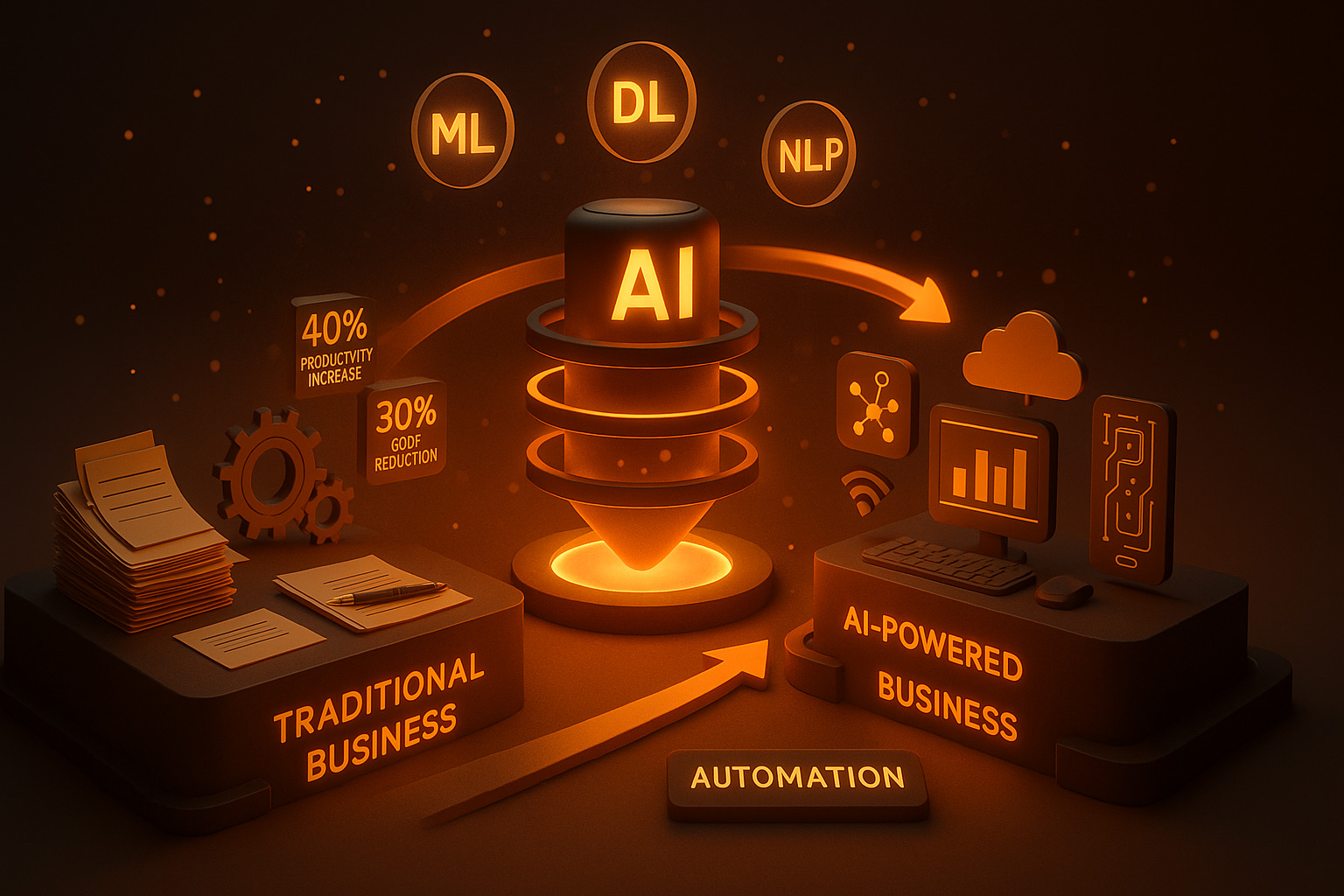Embracing AI: The Key to Future-Proofing Your Business in a Digital World
In today's rapidly evolving digital landscape, businesses that fail to adapt risk being left behind. Discover why AI adoption isn't just an option—it's essential for survival.

I remember the first time I walked into a store and saw a self-checkout kiosk. It felt like something out of a sci-fi movie. Fast forward a few years, and now I get frustrated when I have to wait in line for a human cashier. That's the thing about technology—it has a way of becoming so integrated into our daily lives that we can't imagine living without it.
The same transformation is happening with artificial intelligence in business. What once seemed like a futuristic concept is now becoming the standard operating procedure for companies that want to stay competitive. The question isn't whether AI will change your industry—it's whether you'll be leading that change or scrambling to catch up.
The Reality Check: Why Resistance is Futile
Let me be blunt: if you're still debating whether to implement AI in your business, you're already behind. I've seen this pattern play out time and again. Companies that were hesitant to adopt new technologies—whether it was the internet in the 90s, mobile apps in the 2000s, or cloud computing in the 2010s—found themselves playing catch-up while their competitors reaped the benefits of being early adopters.
The Hard Truth
According to recent studies, companies that embrace AI early see an average of 40% increase in productivity and 30% reduction in operational costs. Meanwhile, late adopters often face a 50% higher cost of implementation and struggle with talent acquisition.
Beyond the Hype: Real-World Impact
I want to share a story that really drove this home for me. A few months ago, I visited a manufacturing client who was struggling with quality control issues. They were losing thousands of dollars every month due to defective products slipping through their manual inspection process. Their team was overworked, stressed, and frankly, exhausted from the constant pressure to catch every single defect.
We implemented a computer vision AI system that could detect defects with 99.7% accuracy—far better than human inspectors. Within three months, their defect rate dropped by 85%, and their quality control team could focus on more strategic tasks. The ROI was immediate and substantial.
The Human Element: AI as Your Team's Superpower
Here's what many people get wrong about AI: it's not about replacing humans—it's about augmenting human capabilities. Think of it like having a super-smart assistant who never gets tired, never makes calculation errors, and can process information at lightning speed.
Your employees can focus on what they do best: creative problem-solving, building relationships with customers, and making strategic decisions. AI handles the repetitive, time-consuming tasks that drain energy and creativity.
The Competitive Advantage You Can't Afford to Ignore
Let's talk about the competitive landscape. Your competitors are already exploring AI solutions. Some are probably implementing them as we speak. The early adopters are gaining advantages that compound over time:
- Faster decision-making through real-time data analysis
- Improved customer experiences with personalized interactions
- Operational efficiency that reduces costs and increases margins
- Innovation capabilities that lead to new products and services
- Talent attraction as top professionals want to work with cutting-edge technology
The Cost of Waiting
I understand the hesitation. Change is scary, and AI implementation requires investment. But consider this: the cost of not implementing AI is often much higher than the cost of implementation itself.
Every month you delay is another month your competitors gain ground. Every quarter you wait is another quarter of missed opportunities and inefficiencies. The longer you wait, the more expensive and complex the transition becomes.
Practical Steps to Get Started
So, where do you begin? The key is to start small and scale up. Here's a practical approach that has worked for many of our clients: